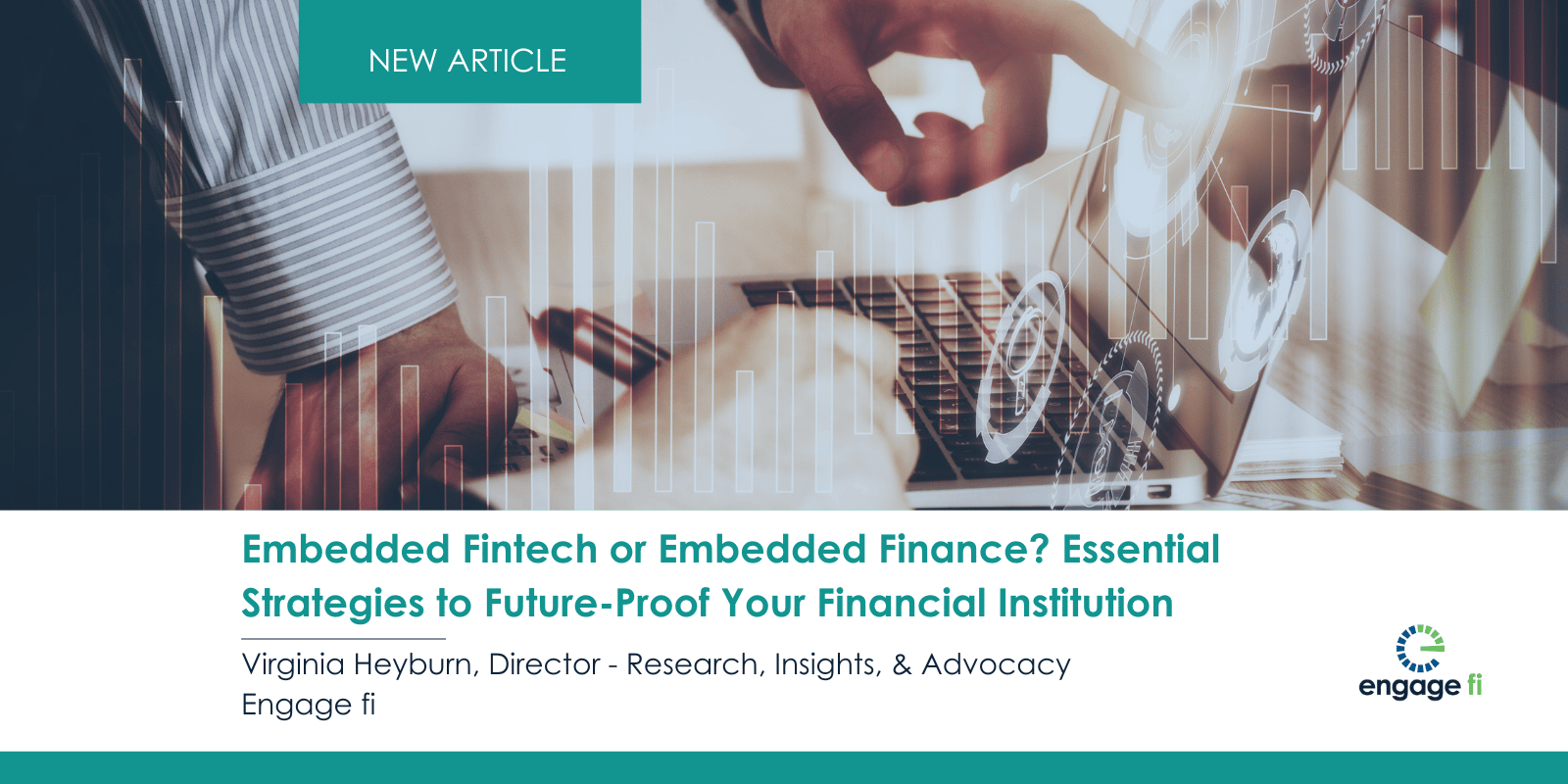By Greg Ryan
Core & Digital Specialist
Engage fi
Peer-to-peer or Person-to-Person (P2P) transactions are now mainstream and a growing sector of consumers’ financial activity. Younger generations are leading the movement, and their use has spurred their parents and grandparents to adopt these technologies. With this increased usage, ensuring consumers have the highest level of security when transferring money online is critical.
However, many times when consumers make digital P2P payments, the financial institution is not the one enabling the transaction; instead, it is initiated via an app such as PayPal, Venmo, or Square’s Cash App. With the financial institution (FI) out of the loop, the money is transferred “behind the scenes” instantly via debit and P2P networks or in one to three days via ACH.
Fraud is difficult to mitigate in these instances. These platforms are prime targets for scammers, and it only takes one brief moment to have money fraudulently debited from a consumer’s checking account. Without the consumer’s knowledge, the amount is paid out to another account that does not belong to the consumer, usually with no way of getting the funds back.
Financial Institutions Can Shift the P2P Landscape
Integrating a P2P service through a financial institution’s digital banking platform provides many benefits to the FI and the consumers they serve. A shift to instant payments with an integrated payment app can offer a way to reimagine your financial institution’s involvement with P2P transactions. Additionally, when you integrate with reputable vendors, you provide a safer and more convenient digital payment solution for your consumers.
Focus on Real-Time Risk Management:
- Instant payments enable financial institutions to confirm receipt and postings to their consumers’ accounts in real-time. The time from consumer initiation to the availability of funds takes seconds rather than days.
- Financial institutions can implement transaction limits and controls from the P2P platform and their core system. Providing the ability to block P2P transfers for a set time after a password reset and setting daily volume limits are excellent deterrents for fraudsters.
- Immediate visibility is critical to prevent fraud. When embedded in your digital banking environment, consumers can see their account balances and know whether they have enough funds available before sending the payment.
- When a consumer initiates a P2P payment, the financial institution can identify and incorporate factors such as the person’s device information, transaction history, online behaviors, and more into a fraud mitigation plan.
Locked Doors Offer More Security:
- Before P2P can be accessed, consumers must log in to their online banking platform, which should require a secure access code and possibly multi-factor authentication.
- There is an additional safeguard when money transferred goes directly into the consumer’s account, without the need for a debit card to be linked.
- In a potential account takeover situation, call centers should know to ask for additional information beyond the mother’s maiden name or last four of SSN when verifying a caller; scammers most likely already have this information.
Educate Consumers:
- P2P is about sending money to those you trust. Teaching your consumers best practices will help prevent fraud
- Urge consumers to check their bank accounts often and report unusual activity.
- Ensure consumers understand they will never receive a call or email to request personal information such as passwords and social security numbers.
- Be aware of common schemes used by bad actors to scam their targets and educate consumers on these tactics. If it’s too good to be true, it probably isn’t.
Offering an integrated P2P service can be a challenging opportunity for a financial institution, albeit necessary to keep up with consumer demands. Old risks are evolving into new ones every day, and staying ahead of fraudsters is near impossible. However, taking measures to mitigate fraud by offering effective consumer education, providing staff training, and implementing strong back-office controls all go a long way to protect your financial institution and allow your consumers a safe place to move their money.
About the Author
 As a core consultant, Greg provides strategic conversation and guidance pertaining to core technology searches. Greg partners with Engage fi clients to help seek out solutions that enable them to grow and provide best-in-class services to their consumers.
As a core consultant, Greg provides strategic conversation and guidance pertaining to core technology searches. Greg partners with Engage fi clients to help seek out solutions that enable them to grow and provide best-in-class services to their consumers.
Before joining Engage fi, Greg worked for a vendor as a project manager for core conversions, helping clients navigate the complex conversion process. He brings over a decade of industry and core product knowledge to Engage fi.
To schedule a time to speak with Greg or one of our other consultants about your financial institution’s P2P strategy, please call us at (844) 415-7962 or click here to book a call online.

 As a core consultant, Greg provides strategic conversation and guidance pertaining to core technology searches. Greg partners with Engage fi clients to help seek out solutions that enable them to grow and provide best-in-class services to their consumers.
As a core consultant, Greg provides strategic conversation and guidance pertaining to core technology searches. Greg partners with Engage fi clients to help seek out solutions that enable them to grow and provide best-in-class services to their consumers.